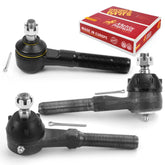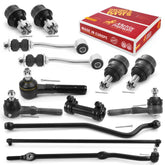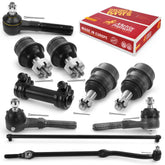Comparing Drum Brakes and Disc Brakes: Pros and Cons
The braking system is a crucial component of any vehicle, as it enables controlled slowing down or stopping. Through friction, the kinetic energy of the vehicle is converted into thermal energy, which is done by engaging the brake pads against a spinning surface (rotor or drum) through hydraulic pressure when the brake pedal is pressed.
It is important to note that there are various types of brakes, including drum brakes and disc brakes, each with distinct designs and performance characteristics. As such, it is essential to ensure that your vehicle's braking system is in good working condition to ensure maximum safety and performance on the road.
What are Disc Brakes?
Disc brakes consist of a brake rotor (also known as a brake disc) that is connected to the wheel and a brake caliper that houses brake pads. When the brake pedal is pressed, hydraulic pressure forcefully clamps the brake pads onto the spinning rotor, generating friction and effectively slowing down the vehicle.
Disc brakes offer several advantages, including their ability to dissipate heat, making them suitable for heavy-duty and high-performance applications. In addition, they typically provide better stopping power and are less prone to fading during prolonged or aggressive braking. However, it is important to note that disc brakes may be vulnerable to contamination from water, debris, and road grime, which can significantly affect braking performance and generate more brake dust.
What is different with Drum Brakes?
Drum brakes consist of a drum-shaped housing that encloses brake shoes. Hydraulic pressure from the brake pedal causes the brake shoes to expand against the inside of the drum, resulting in friction that decelerates the vehicle.
Notably, drum brakes' enclosed design makes them more reliable in specific conditions and less susceptible to external contaminants, which means they produce less brake dust. However, drum brakes are less efficient at dissipating heat compared to disc brakes, which can lead to brake fade under heavy use. Additionally, they typically offer lower stopping power and may require greater force on the brake pedal to achieve the same deceleration as disc brakes.
Application Differences
Disc brakes are frequently utilized in modern vehicles on the front wheels, and in some cases, on all four wheels. They are highly preferred for performance-oriented vehicles and larger automobiles such as trucks and SUVs. Conversely, drum brakes are commonly found on the rear wheels of many vehicles, particularly smaller cars and older models. They are also employed in parking brake systems.
When it comes to deciding between disc brakes and drum brakes, there are several factors to consider. While disc brakes have become more popular due to their superior performance, drum brakes are still useful in certain applications due to their simplicity and reliability. The choice between the two depends on various factors, such as the vehicle design, intended use, and manufacturer preferences. However, if you're looking for a brand that offers a wide range of different vehicle parts, Metrix Premium Chassis Parts is the perfect choice. Unlike many other brands, we provide old car parts like drum brakes, which can be difficult to find elsewhere. So, whether you're looking to upgrade your vehicle's braking performance or simply need to replace an old part, Metrix Premium Chassis Parts has got you covered. Trust us to provide you with the best quality and value in the market.









